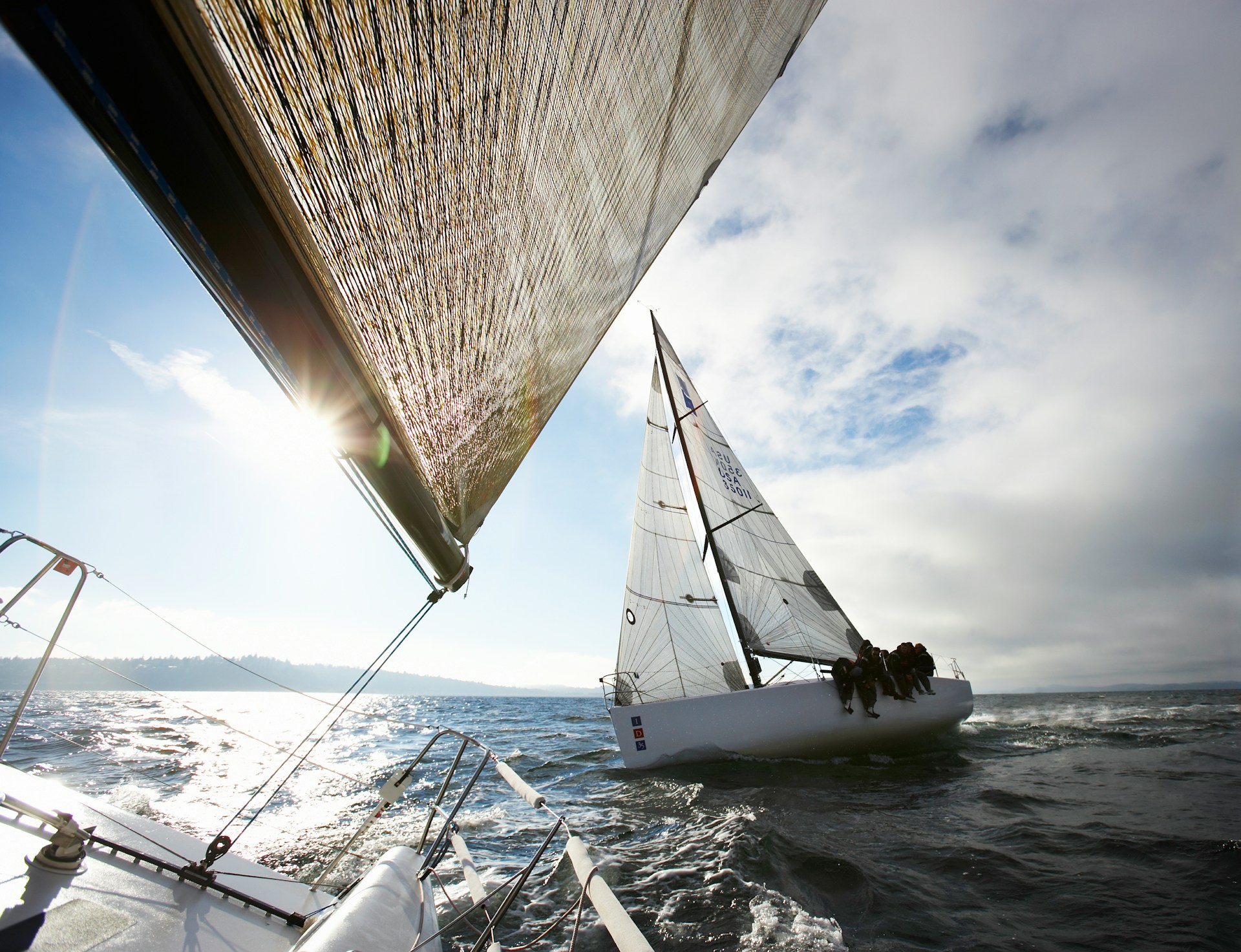There’s something peaceful and powerful about harnessing the wind and gliding silently across the water. Sailing may seem intimidating at first, but once you learn the basics, it becomes one of the most rewarding ways to experience Texas lakes. Whether you’re starting small on a local reservoir or dreaming of big sails on Lake Travis, this guide will help you set out with confidence and safety in mind.
1. Start on a Calm Texas Lake
Before you take to the Gulf or open waters, Texas lakes are perfect training grounds. They offer predictable winds, calmer surfaces, and safe places to dock or anchor.
Some of the best beginner-friendly sailing spots include:
- Lake Travis (Austin area) – steady breezes and beautiful coves.
- Lake Ray Roberts (north of Dallas) – wide-open water with consistent wind.
- Canyon Lake (near San Antonio) – clear water and scenic limestone cliffs.
- Lake Texoma – large and versatile, ideal for day trips or lessons.
Calm water makes it easier to practice tacking, jibing, and trimming your sails without the pressure of heavy waves or fast currents.
2. Learn the Basics Before You Sail
You don’t need to be an expert to start, but understanding a few key sailing concepts makes all the difference:
- Points of Sail: The direction your boat moves relative to the wind (upwind, downwind, crosswind).
- Tacking and Jibing: The two basic turns you’ll use to change direction.
- Trimming the Sails: Adjusting sail tension for speed and balance.
- Right of Way: Knowing which vessel yields in close situations.
Many marinas on Texas lakes offer beginner sailing lessons or day courses. These short sessions often teach everything from wind awareness to docking safely.
3. Choose the Right Sailboat
For beginners, smaller is better. Lightweight sailboats or dinghies are easier to maneuver and require less equipment.
Here are a few great starter options:
- Sunfish: Simple, single-sail boats perfect for calm lakes.
- Laser or RS Zest: Compact and responsive for one or two people.
- Day Sailers: Small keelboats that offer stability for families or groups.
If you’re planning to dock your boat long-term, modular floating docks from EZ Dock Texas can provide a secure, low-maintenance launch system that adjusts with changing water levels.
4. Check the Weather and Wind
Texas weather can change quickly. Always check wind speeds before heading out—ideal conditions for beginners are around 5–10 knots (6–12 mph). Avoid sailing in gusty, unpredictable winds or approaching storms.
A handheld wind meter or local weather app can help you gauge real-time conditions. If the water looks choppy or whitecaps appear, it’s best to wait for calmer conditions.
5. Dress for the Elements
Even on mild days, the Texas sun can be intense. Wear lightweight, moisture-wicking clothing, polarized sunglasses, and non-slip boat shoes. Always have a U.S. Coast Guard-approved life jacket—and make sure it fits properly.
Keep a dry bag onboard with sunscreen, a hat, and a change of clothes. Remember, it’s easy to get splashed while learning.
6. Learn to Launch and Dock Smoothly
Launching and docking can feel stressful at first, but practice makes it second nature.
For launching:
- Point your bow (front) into the wind.
- Keep sails loose until you’re clear of the dock.
- Have a friend help push off if needed.
For docking:
- Approach slowly at an angle, adjusting sails to reduce speed.
- Use fenders to protect your hull.
- Keep a boat hook handy to guide yourself gently in.
A stable floating dock with a nonslip surface, like those from EZ Dock Texas, makes these moments safer and easier—especially for first-time sailors.
7. Master Safety Essentials
Safety on the water isn’t optional—it’s foundational. Always have:
- A life jacket for each person.
- A throwable flotation device.
- A whistle or air horn for signaling.
- A waterproof flashlight.
- A first-aid kit and small anchor.
Share your float plan (where you’re going and when you’ll return) with someone onshore. It’s a simple step that can make a big difference in an emergency.
8. Practice Wind Awareness
The key to sailing well is learning to “read” the wind. Watch flags, ripples on the water, or even the feel on your face to sense changes.
Try sailing at different angles to understand how your boat responds. When the wind shifts, so should your sail position. This awareness builds instinct over time—and helps you move efficiently instead of fighting the elements.
9. Take It Slow and Enjoy the Journey
Sailing isn’t about speed—it’s about rhythm. Give yourself time to learn without pressure. Every sail, every breeze, and every minor mistake teaches you something new.
Start with short outings close to your dock or marina, then gradually venture farther as your confidence grows. Remember, even seasoned sailors still learn something every time they go out.
10. Connect with the Texas Sailing Community
You’ll find welcoming sailing clubs and communities across the state. Joining one gives you access to lessons, races, and experienced sailors who love helping newcomers.
Some great places to start include:
- Austin Yacht Club (Lake Travis)
- Corinthian Sailing Club (White Rock Lake, Dallas)
- Lakewood Yacht Club (Clear Lake Shores)
Community sailing is not only fun—it also keeps you learning and inspired year-round.
Set Sail with Confidence
Sailing on Texas lakes offers a perfect blend of adventure, freedom, and tranquility. With a little preparation, patience, and the right gear, your first sailing experience can become a lifelong passion.
For safe, stable docks and launch systems designed for sailboats and water recreation, contact EZ Dock Texas. You can also follow EZ Dock Texas on Facebook for more tips, stories, and inspiration from fellow boaters across the Lone Star State.







